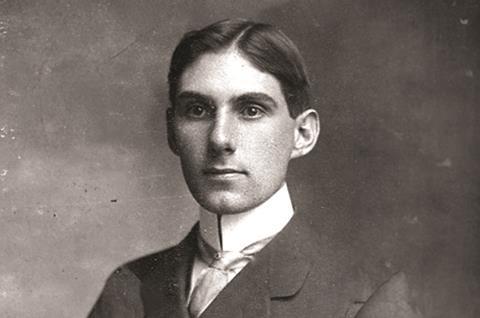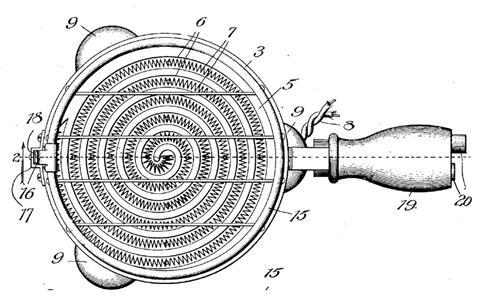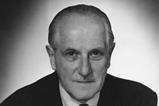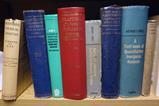Raise a toast to the man who invented an essential alloy

I want to report a theft. I’m not talking about the notorious ‘high vapour pressure’ of useful widgets in shared labs. This is much more serious. A beautiful tube furnace – lovingly built by our head of technical staff Dave Knapp, and that I used for years to purify things by sublimation – has vanished! Consisting of a pair of clear coaxial Pyrex tubes, its interior was meticulously wound with a spiral ribbon of one of the most useful alloys ever invented: nichrome, a wonder material that changed the world.
Its inventor, Albert Marsh, was born in Pontiac, Michigan. As a boy, he became interested in chemistry and from 1897 he attended the University of Illinois. Although he later claimed to have walked out after a row with a professor, the Illio yearbooks tell a different story. He was ribbed mercilessly in its 1901 volume: ‘Always Loving Marsh’ is listed as ‘Main Osculator’ of the Spooners’ Club; 9 October was noteworthy because ‘Mr Marsh and Miss Hayward fail to meet in the library at noon to study German’; the pair are said to have written ‘The Art of Courting’. In the event, Marsh and Minnie Hayward married in 1901.
After briefly working for the State Water Survey Board, he was hired by the Chicago Storage Battery Company. That firm was probably set up by two tech entrepreneurs excited by the prospect of electrification. The experience must have got Marsh thinking about wire. But the owners moved on to power tools instead, setting up Chicago Pneumatic.
Out of a job, Marsh did some technical writing, still tinkering with alloys. Around 1903 he met chemist William Edmund Hoskins who had a partnership with one of America’s top carom billiard players, William Spink. They had developed a superior ‘chalk’, mixing fine silica and alumina, to roughen the leather tips of the cues. With it, Spink could play spectacular spinning shots, and while Spink played, Hoskins ran the company. Marsh had a new job.
In a memoir, Hoskins maintains that he was heavily involved with Marsh’s work, but there is little independent evidence for this. Starting in 1905, Marsh patented a series of thermoelectric devices, using a Bunsen burner to generate electricity via the Seebeck effect. The devices are rather beautiful: multiple junctions arranged in loops or squares to allow heating on one side, and cooling on the other, to generate electricity. All depended on a set of new alloys of nickel with other transition metals.

His 1906 patent is different. With a 9:1 ratio of nickel to chromium he had a ductile alloy with a resistance 50 times that of copper, but a much higher melting point. ‘It does not become crystalline (sic) and brittle under heating and cooling, it resists oxidation to a remarkable degree … and likewise keeps a polish under all atmospheric conditions.’ His thinking was turned on its head. Rather than using heat to generate electricity, he would use his resistance wires to generate heat. He named his alloy chromel and patented an electric hotplate, with a flat spiral of coiled wire inside a metal disc. There was an optional toasting accessory. Breakfasts would never be the same again.
Hoskins set up a new company with Marsh in charge. They made dental furnaces and toasters, but little money. By 1910, Hoskins had lost interest, and Marsh focused on chromel wire. When the giant General Electric began to sell consumer products using the same metal, Marsh sued and won big, making him and Hoskins rich men. But Marsh never forgot his own people. He ran Hoskins Co. on a profit-sharing basis, so that every employee shared in its success. A profile in Time described him as ‘slow-spoken, tousled, deliberate Metalman Marsh wears polka-dot ties, is rarely without a cigar’. He died in 1944.
Exploration of the Ni–Cr phase diagram would take nichrome far beyond what Marsh ever imagined. The ubiquitous Type-K thermocouples are made with chromel. Addition of iron yielded inconel, the basis of some of the early ‘stainless’ cookware (it was unblackened after overnight stewing of chicken gizzards), and in the 1950s subtle manipulation of composition and thermal treatment gave g-matrix superalloys, single crystals of which operate without deformation or weakening close to their melting temperature in incandescently hot turbines.
Which is all very well. But I want my lovely nichrome furnace back. I miss peering at the swirling wind of subliming molecules and watching the slow growth of crystals. We have plenty of nichrome left, but Dave Knapp has long retired. I wonder who could help me make another? Because there’s classic kit; but there’s also kit you really pine for when it’s gone.
Acknowledgment
The furnace that Dave Knapp built was based on Geoff Cloke’s design.
References
A L Marsh, ‘Electric Resistance Element’ US Patent No. 811859

















No comments yet